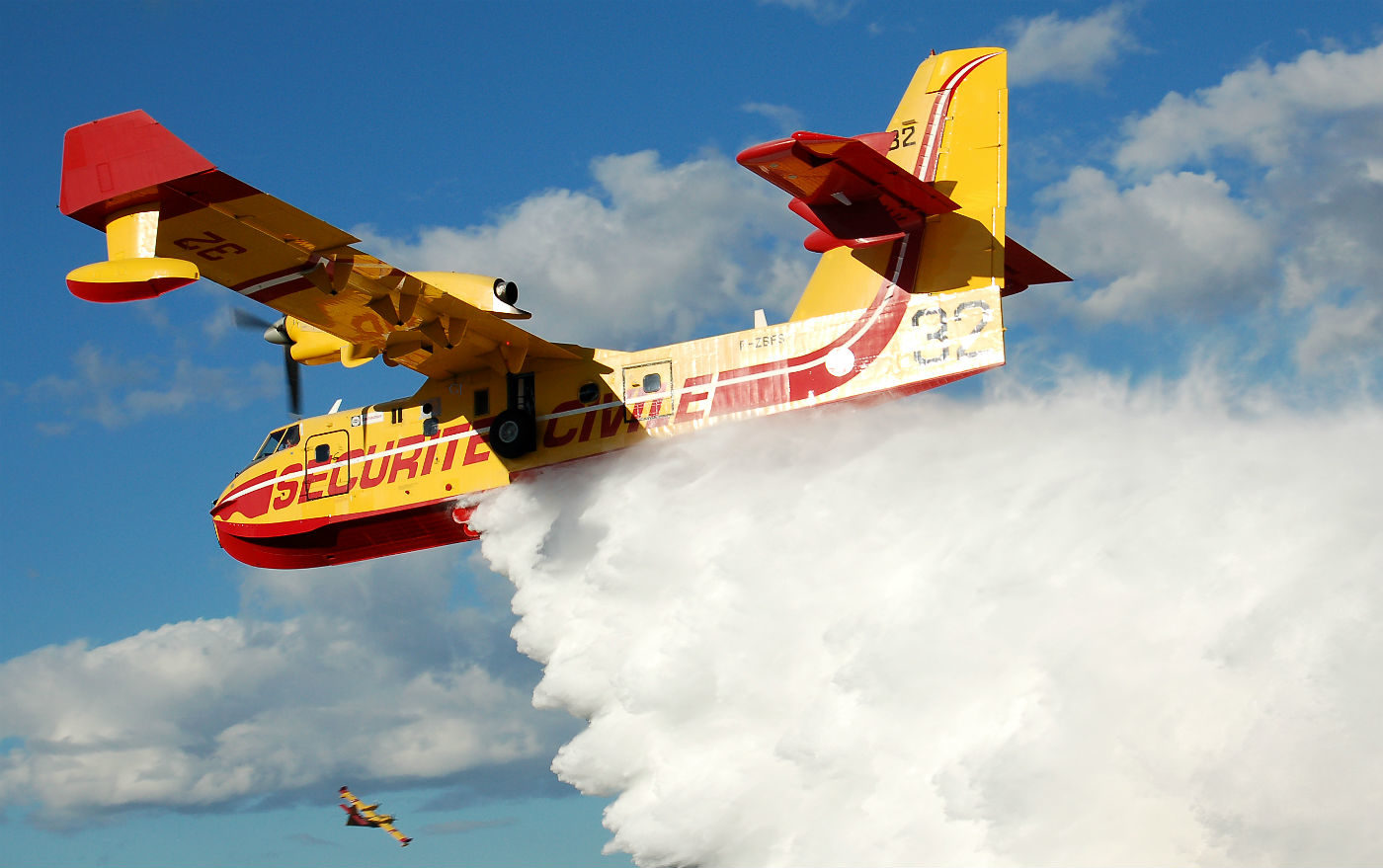Estimated reading time 5 minutes, 18 seconds.
Citing a potential global demand for amphibious, multirole aircraft with firefighting capabilities, Viking Air Ltd. is weighing the possibility of re-starting production of the iconic CL-415 waterbomber.

Sidney, B.C.-based Viking said it has acquired enough production space in Calgary, Alta., to handle an aircraft the size of the CL-415, formerly manufactured by Bombardier, which has a wingspan similar to that of a Boeing 737.
“We’re getting a fair amount of interest around the world for multi-mission-type aircraft,” said David Curtis, Viking Air’s chief executive officer.
“So the demand is not only for aerial firefighting, but also maritime patrol. The aircraft has been certified for oil dispersant for oil spills, and there’s many more roles the aircraft can be deployed [for].”
Viking acquired Bombardier’s amphibious aircraft program in 2016, including the transfer of type certificates for the CL-415, CL-215 and CL-215T waterbombers and all their variants.
Upon completion of the transfer, Viking was designated original equipment manufacturer (OEM) for the amphibious aircraft fleet, with full manufacturing design rights. The company also assumed responsibility for in-service support for a fleet of 170 waterbombers in 11 countries.
“Our first priority and current focus is on the product support business to ensure we’re supporting the operating fleet,” said Curtis.
“It’s a critical infrastructure platform for fire protection around the world, so we knew that we had to execute a seamless transition and absolutely make sure that support was uninterrupted.”
Visits to customers prompted questions about also manufacturing the CL-415, which Bombardier halted in 2015.
Those discussions generated enough interest for Viking to consider re-starting production, noting some customers may want to replace waterbomber fleets that are roughly 20 years old.
Viking also sees opportunities to invest in the CL-415 and modernize it, something that may help it break into new markets.
“We’re already in discussions in the Pacific Rim, Asia-Pacific,” said Curtis. “So there’s already a replacement market. Europe also has a large install base providing market opportunities for a combination of aircraft replacements and new aircraft.”
Viking is taking at least six months to determine if it will move ahead with CL-415 production, which the company anticipates would create about 900 jobs directly associated with the program and at least 2,000 indirect jobs.
If the program moves ahead, detailed parts and sub-assemblies would likely be built at the Viking facility in Sidney and utilize the company’s supply chain, said Curtis.
Major assembly and aircraft integration would take place in the Calgary area, where Viking has four separate facilities, including the final assembly line for the Twin Otter Series 400 aircraft.
Viking launched the Twin Otter Series 400 production program in 2007 after becoming type certificate holder of all out-of-production de Havilland aircraft.
That program is expected to pause for three months starting July 28, reportedly due to a drop in demand prompted by a downturn in the mining and energy sectors.
But Curtis said the possibility of CL-415 production has nothing to do with a drop in demand for the Twin Otter.
“Part of our strategy is product diversity, and if we have two production lines producing different products for different markets, that’s better than one,” he said.
“We’re very confident in the future market for the Twin Otter. At the moment we’re building them faster than we sell them, so we’re just taking a bit of a time out.
“But we still see the global market for the Twin Otter to be very strong. At the same time, having a second product in production would just be good diversity.”
The venerable CL-415 is considered the industry’s benchmark amphibious waterbomber, nicknamed the “SuperScooper” for its ability to scoop a 6,137-litre load in 12 seconds while skimming at high speed over the water.
It was introduced in 1994, building on the legacy of the CL-215, which originally launched in 1969.
There are about 90 CL-415 aircraft in the existing global fleet according to Curtis, and Viking hopes it may be able to double that, if the manufacturing program goes ahead.
“We’re optimistic that over a sort of an estimated 15-year period the demand for new aircraft would be about the same–another 100 aircraft,” said Curtis. “But that’s yet TBD [to be determined].”









There is a limited market for the CL but likely 10-12 a year for replacement and some expansion with perhaps batch production like Bombardier did. Costs have to come down and spares available all the time with out costing an arm and a leg.
I worked as an engineer on the CL415 nacelles and I can tell you at present to cost down the aircraft would take some serious investment. It’s old fashion aircraft fitting and quite bespoke. An amazing aircraft it is though and I take a lot of pride to say I helped build a good few of them.